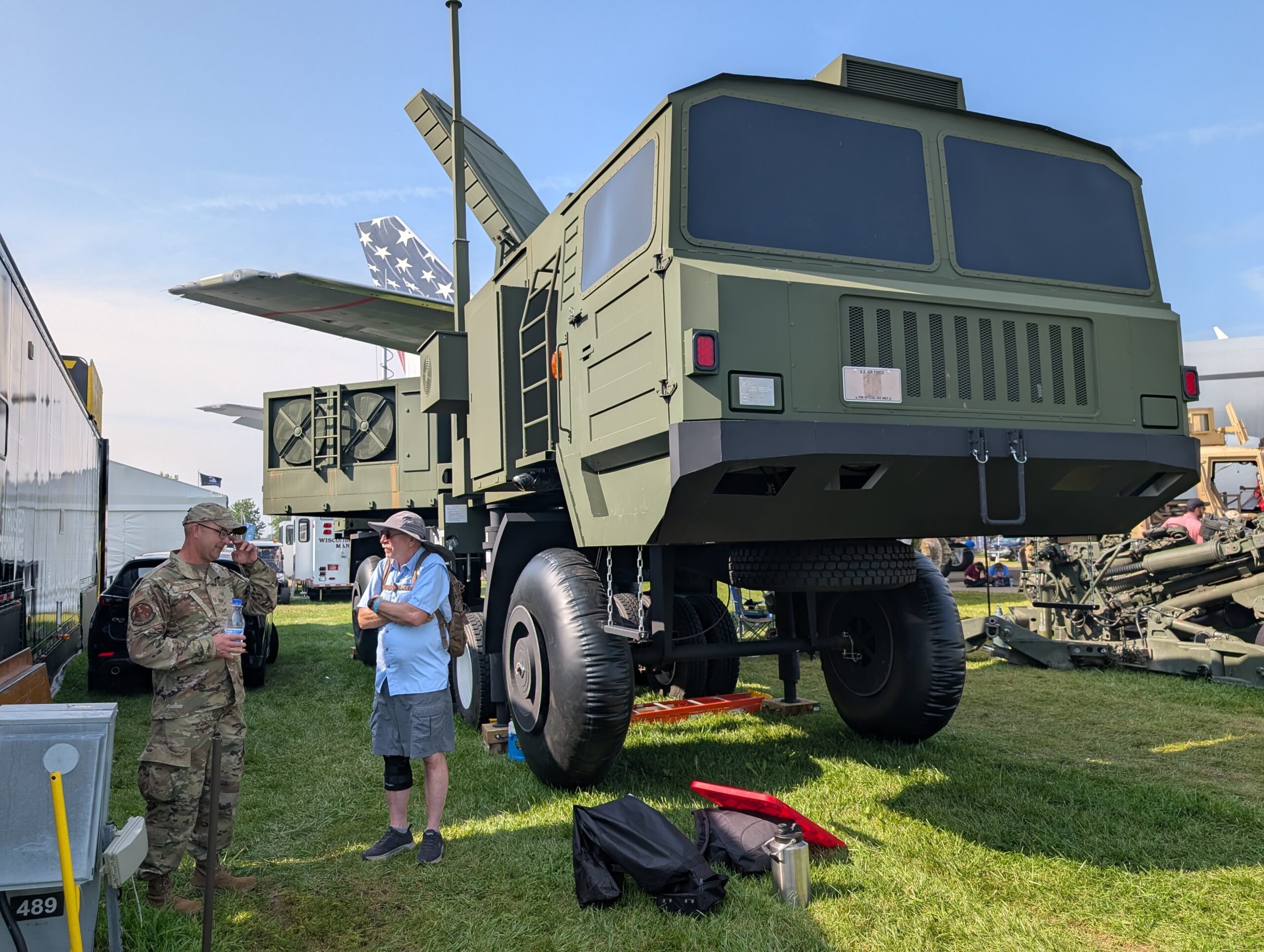Key Takeaways
- The U.S. Air Force revealed a new HQ-16 surrogate target vehicle to enhance pilot training against contemporary air defense systems.
- This mock system was publicly showcased for the first time at the AirVenture event in Oshkosh, Wisconsin.
- The HQ-16 is aimed at improving readiness and simulation of real-world threats for pilots in training.
Introduction of the HQ-16 Surrogate Target Vehicle
The U.S. Air Force recently introduced a new surrogate target vehicle, the HQ-16, to bolster advanced pilot training against modern air defense threats. This mock system made its public debut at the Experimental Aircraft Association’s annual AirVenture event at Wittman Regional Airport in Oshkosh, Wisconsin.
The HQ-16 is designed to replicate the features and capabilities of a short to medium-range surface-to-air missile (SAM) system. By simulating the real-world environment that pilots are likely to encounter, this target vehicle aims to provide effective training scenarios that align closely with current defense capabilities.
Training military pilots involves preparing them for various scenarios, including engagement with sophisticated air defense systems. The introduction of the HQ-16 is part of the Air Force’s broader initiative to ensure pilots are equipped with the necessary skills to navigate complex air environments safely and efficiently.
The AirVenture event, known for showcasing advancements in aviation and aerospace technology, provided a fitting stage for the unveiling of this innovative training tool. Attendees, including aviation enthusiasts, military personnel, and industry experts, had the opportunity to observe the HQ-16 and its potential applications for pilot training.
The decision to deploy a surrogate target vehicle like the HQ-16 reflects the Air Force’s commitment to modernizing its training programs, ensuring that pilots are prepared to face every potential threat. Continued advancements in air defense technology necessitate ongoing updates to training methods. By incorporating high-fidelity training tools, pilots can better acclimate to the systems they will encounter in real combat situations.
The HQ-16’s simulation capabilities make it an essential asset for both novice and experienced pilots. Through targeted exercises, pilots can develop and refine their strategies for engaging enemy air defenses, enhancing their situational awareness and decision-making in high-pressure environments.
The introduction of the HQ-16 is a response to the evolving nature of air warfare, emphasizing the need for robust training frameworks that can adapt to technological advancements. The Air Force’s forward-thinking approach aims to maintain the readiness and effectiveness of its pilots in an increasingly competitive landscape.
Alongside the HQ-16, the U.S. Air Force is likely to explore additional innovations in training methodologies. This initiative underscores a larger trend of integration between cutting-edge technology and military preparedness, prioritizing pilot safety and operational success.
In conclusion, the unveiling of the HQ-16 surrogate target vehicle represents a significant stride in enhancing the quality of pilot training. By improving the realism of training scenarios, the Air Force addresses modern air defense challenges while preparing its personnel for future missions.
The content above is a summary. For more details, see the source article.















